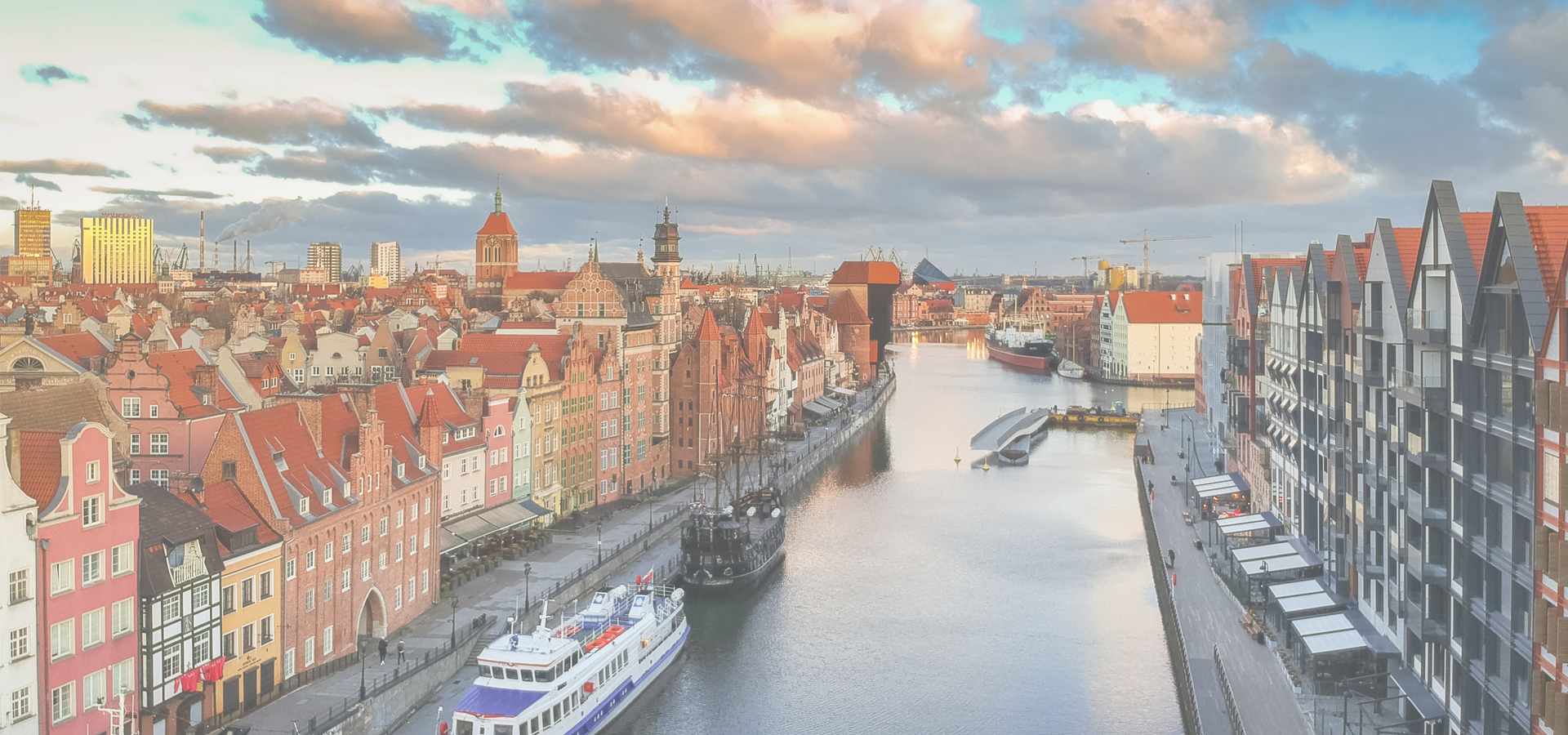Skarszewy, Starogard County, Pomeranian Voivodeship, Poland
🇵🇱 Skarszewy is a small town in Starogard Gdański County, Pomeranian Voivodeship, northern Poland. It is located within the ethnocultural region of Kociewie, 40 km (25 miles) south of Gdańsk. Population: 6 809 (30 June 2005). In 2005 the town was given the title the Pearl of Pomerania. It is the seat of the urban-rural administrative district Gmina Skarszewy.
The old town is enclosed by fragments of the 14th century stone walls and a Gothic parish Church of St Michael the Archangel which dates from the 14th century with well-preserved furnishings from the baroque era.
In the town square is the fountain Griffin Pomorski with three griffins holding the emblem of St. John Skarszew on a platter. At the top were placed reproductions of three coats Skarszew: from 1198 when the town belonged to the Knights Hospitaller; from 1320 when Skarszewy acquired civic rights and the current coat of arms.
History The town was first mentioned as a seat of Knights Hospitaller in 1198. It was part of the medieval Kingdom of Poland until the 14th century. In 1320 it obtained town rights, and in 1370 it was sold by the Order of St. John to the Teutonic Order. In 1454, upon the request of the anti-Teutonic Prussian Confederation, the town was re-incorporated into the Kingdom of Poland by King Casimir IV Jagiellon. During the subsequent Thirteen Years' War, in 1455, it was ravaged by the Teutonic Knights, who finally renounced any claims to the town in 1466. Again within Poland, administratively it was part of the Pomeranian Voivodeship in the province of Royal Prussia in the Greater Poland Province.
In 1613 Skarszewy became capital of the Pomeranian Voivodeship. Between 1629 and 1655 it was devastated by the Swedes. Large fires in the years 1708, 1714, 1731 destroyed almost all the buildings. In 1762–1765, Józef Wybicki, the author of the lyrics of the national anthem of Poland, studied law at the local court, located in the old castle. In 1772 the town, known in German as Schöneck, was annexed by the Kingdom of Prussia in the First Partition of Poland. It was subjected to Germanisation policies.
In 1871, with the Prussian-led unification of Germany, Schöneck became part of the German Empire. Until 1920, the town was part of the Berent district in the Prussian Province of West Prussia in Germany. According to the census of 1910, Schöneck had a population of 3,494, of which 2,258 (64.6%) were German-speaking, 1,131 (32.4%) were Polish-speaking, 2 (0.1%) were Kashubian-speaking and 102 (2.9%) were bilingual. At the beginning of the 20th century, Schöneck had a Protestant church, a Catholic church, a synagogue, a district court, an old castle (which at that time housed the dairy) and some medium-sized businesses. In 1906–1907, local Polish children joined the children school strikes against Germanisation that spread throughout the Prussian Partition of Poland.
Under the Treaty of Versailles, Skarszewy was reassigned to Poland, after the country regained independence. The Blue Army of Poland commanded by General Józef Haller entered Skarszewy on 30 January 1920, ending 148 years of Prussian rule. As part of the Second Polish Republic, administratively it was located in the Pomeranian Voivodeship. After the town became part of Poland, many ethnic Germans emigrated to Germany and by 1921, Germans became a minority in the town, comprising only around 1,000 (33.2%) out of a total population of 3,010.
During World War II, from 1939 to 1945 it was occupied and annexed by Germany and was administered as part of the Berent district in Reichsgau Danzig-West Prussia. Hundreds of Poles from Skarszewy and surrounding villages were imprisoned in the town, and later massacred in various places during the Intelligenzaktion in October and November 1939. Over 240 Poles, previously imprisoned in Skarszewy, including teachers, merchants, local officials, priests, activists, craftsmen, workers, farmers, were murdered in the nearby forest by the SS, Gestapo and Selbstschutz. Over 100 Poles were murdered in the forest between Skarszewy and Więckowy. The wójt of Gmina Skarszewy, Emil Więcki, was murdered in a massacre carried out in Mestwinowo. The local school principal was among Polish teachers and principals murdered in the Dachau concentration camp. In November 1939, around 1,000 Poles, mostly families of those murdered in the massacres, were expelled to the General Government in the more-eastern part of German-occupied Poland.
Towards the end of the war, Soviet aircraft repeatedly bombed the town and on March 8, 1945 the Red Army's East Pomeranian Offensive burned parts of the town, causing the destruction of up to 40% of the buildings in Skarszewy. After the war, the town was restored to Poland and the remaining German population was expelled in accordance with the Potsdam Agreement.
In 2012, the town limits of Skarszewy were expanded, by including the settlement of Pólko.
Europe/Warsaw/Pomeranian_Voivodeship

Skarszewy has a population of over 6,468 people. Skarszewy also forms part of the wider Starogard County which has a population of over 127,676 people. Skarszewy is situated near Starogard Gdański.
Twin Towns, Sister Cities Skarszewy has links with:
🏴 Biggleswade, England 🇩🇪 Leck, Germany 🏴 Sandy, England🇷🇺 Novomoskovsk 54.083
🇩🇪 Greifswald 54.097
🇧🇾 Smalyavichy 54.1
🏴 Barrow-in-Furness 54.111
🏴 Barrow in Furness 54.111
🇵🇱 Kościerzyna 54.117
🇸🇰 Považská Bystrica 18.442
🇵🇱 Wodzisław Śląski 18.464
🇵🇱 Bydgoszcz-Toruń 18.494
🇵🇱 Starogard Gdański 18.533
Locations Near: Skarszewy 18.4333,54.0667
🇵🇱 Starogard Gdański 18.533,53.967 d: 12.9
🇵🇱 Kartuzy 18.208,54.331 d: 32.8
🇵🇱 Gdańsk 18.653,54.349 d: 34.4
🇵🇱 Tczew 18.796,54.089 d: 23.8
🇵🇱 Tricity 18.55,54.433 d: 41.4
🇵🇱 Sopot 18.567,54.442 d: 42.6
🇵🇱 Kościerzyna 17.983,54.117 d: 29.9
Antipodal to: Skarszewy -161.567,-54.067
🇹🇴 Nuku'alofa -175.216,-21.136 d: 16176
🇵🇫 Papeete -149.566,-17.537 d: 15824.1
🇦🇸 Pago Pago -170.701,-14.279 d: 15519.6
🇼🇸 Apia -171.76,-13.833 d: 15453.3
🇺🇸 Hilo -155.089,19.725 d: 11786.4
🇺🇸 Maui -156.446,20.72 d: 11684.7
🇺🇸 Maui County -156.617,20.868 d: 11669.3
🇺🇸 Wailuku -156.505,20.894 d: 11665.8